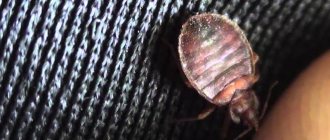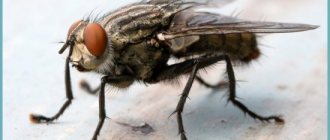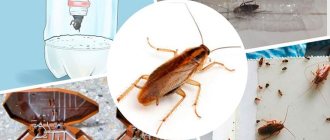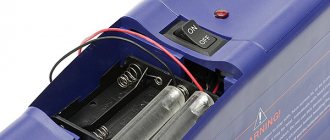Summer is the favorite time of year for most people in our country. But there are also several unpleasant aspects that appear with the arrival of warm days. And one of these moments is the invasion of flies and mosquitoes. They buzz unpleasantly and spread various diseases.
How to get rid of these harmful insects? You can buy a chemical at the store. But there is already enough chemistry in our lives. There may be allergies to various aerosols, especially in children. Therefore, many people prefer homemade devices.
Main types of homemade traps
Lures. The principle of action of baits is to lure the fly into a confined space from which it cannot escape.
Poison traps are similar in design to regular baits, but their purpose is to kill insects and not just lure them.
Velcro.
Stun guns and electric nets. Shockers kill insects with electric shock. The nets attract flies with a bright light, and then draw them into the trap with a makeshift fan.
Let's take a closer look at how you can make the most common fly traps with your own hands.
Is it necessary to fight flies and why?
These insects are not only annoying with their buzzing, but their proximity is much more dangerous than it might seem. Flies are carriers of pathogens of various diseases - intestinal infections, eye diseases, tuberculosis. Also, on their paws, they often carry worm eggs onto the food they sit on. That is why combating them indoors is an important task to ensure sanitation and preserve human health.
Plastic bottle
This is the simplest fly trap to use. You need to cut off the top part, and pour a couple of glasses of water with honey diluted in it into the bottom. Mix thoroughly.
You can use an alternative bait - liquid jam, compote or beer. Turn the top of the bottle upside down and place it in the bottom.
The neck should be several centimeters above the water level. This design will prevent the pest from getting out.
Industrial traps for rooms and gardens
There are also industrial versions of fly traps.
- Aeroxon. A glue trap, the bait of which includes environmentally friendly ingredients.
- DELUX AKL-31. A trap whose principle is based on attracting insects with ultraviolet light. Flies that fly up to her are electrocuted. Although the manufacturer positions it as a universal device against mosquitoes, mosquitoes and flies, the latter rarely become trophies of this trap.
- FC001. A mechanical trap, inside of which you need to insert a tablet with an attracting substance, which includes synthesized (Z)-9-Tricosine - a pheromone secreted by flies to attract individuals of the opposite sex during mating. The effect of the tablet is very long - 2-3 tablets may be enough for one season.
Professional traps vary in cost, and they are also superior in convenience and efficiency to homemade options.
Glass jar with funnel
Take a medium-sized jar and place bait inside (the options from the first example are suitable). Place a funnel on the neck of the jar. You can start using it.
- We buy and install an air conditioner
- Do-it-yourself windmill - the best ideas and instructions for building decorative windmills in the garden and on the site (105 photos)
Do-it-yourself walk-behind tractor - how to make a simple and reliable homemade walk-behind tractor for farming (105 photos)
Both of these traps can be made poisonous by adding an insecticide to the liquid bait.
Operating principle of devices
Industrial traps that perform insecticidal functions are special structures that can destroy insects that get to them according to the principle:
- electric shock - the insect dies from a high voltage discharge of electric current,
- glue trap - the insect sticks to the tenacious adhesive composition on special trap plates and remains there to die,
- drawing (suction) by a fan into a sealed container.
The mechanism of action of such devices is as follows - insects fly to it, attracted by the light of the lamp, then are destroyed by the resulting current discharge, or are glued to the adhesive base of a special plate, or are drawn by a fan inside the trap, into a special container. The last version of the installation mechanism applies more to cylindrical traps.
There are also electrical industrial traps, which are intended for different places of use:
- plastic traps with a sealed base are most often used outdoors,
- metal with gratings - for large-scale premises with a large area,
- and stainless steel options are excellent for cases where intensive operation of the trap in a large room is required, as well as a long service life.
The choice of trap depends on what problems need to be solved and what requirements of sanitary and hygienic standards are set by municipal government agencies for a particular enterprise. For example, if in tea production it is necessary to ferment tea raw materials outdoors under the sun or under a canopy in a ventilated pavilion, then it would be most appropriate to use insect traps designed for working outside rather than indoors.
Examples of ALT hooks
Plastic container
This do-it-yourself trap option is suitable for fruit flies (another name is fruit flies), because they are small in size and, accordingly, can easily fit into small holes.
In the container we put the favorite delicacy of fruit flies - spoiled fruits. Cover with cling film so that it fits snugly to the edges and make several holes in it.
You can use a glass instead of a container. In principle, any trap will be effective for fruit flies if it contains spoiled fruit as bait.
Advantages and disadvantages
There are certain advantages and disadvantages to using DIY homemade fly traps.
Main advantages:
- safety for human health and pets;
- do not require special material costs;
- ease of use.
Flaws:
- do not give a 100% result;
- have a delayed effect;
- have an unaesthetic appearance that spoils the interior.
When using traps, you need to understand that such devices are not able to quickly solve the problem of mass reproduction of flies. In this case, it is better to use them in combination with chemicals.
Sticky trap
To create such a trap, we need thick paper, liquid rosin, sweet liquid and castor oil. Cut the paper into strips of suitable width and length. Mix all the ingredients, heat it up and apply the composition to paper.
If necessary, make a loop of thick thread. Velcro is ready. Instead of this composition, you can use purchased glue against insects and rodents.
Another version of Velcro is a CD covered with an adhesive base. It is necessary to tie a loop to the disk, apply jam or honey to the surface and put it in the freezer to make the composition more viscous.
Homemade fly strips
If you don’t want to spend money on such a trifle, then you can make Velcro yourself.
From rosin
There are many recipes. Let's look at a few of the most popular ones.
Application of rosin:
Tricks and secrets of masking tape that will be useful in everyday life and beyond
- 30 g of rosin with 20 g of castor oil are placed in a tin can. The container is heated by immersing it in hot water. Iron conducts heat well, and the composition in the jar will heat up quickly. A few tablespoons of honey or jam are poured into the resulting mass and spread onto paper with a brush.
- Pine resin 300 g, 10 g wax, linseed oil 150 g, 50 g molasses or honey.
- 300 g rosin, 60 g jam or jam, 200 g linseed oil.
- 400 g rosin, 100 g pure bee honey, 200 ml castor oil, 40 ml glycerin oil.
First, purchase paper strips for depilation or use plain thick paper. Cosmetic strips are much better because of the synthetic fiber in the composition, which retains the sweet mass and does not absorb it.
Rosin is always heated in a water bath, just like resin. All ingredients are placed in tin cans, which can then be thrown away. When the resin begins to melt, stir it so that there are no undissolved pieces. Other ingredients are added to the melted rosin. The mass should turn into a homogeneous mixture, with a single color.
Prepare the paper, make a hole for the rope and a plastic jar at the other end. Wide sheets are cut in half.
The spreadable composition should be hot and viscous. When cooled down, immediately reheat and continue working. The layer is smeared with a thickness of 1-2 mm so that the mass does not flow down the edges and the fly does not escape from captivity.
Honey and sugar syrup can easily be replaced with any sweet and sticky ingredients. Sweet baits attract flies with their scent.
From tree resin
You can buy it at a gardening store or collect it yourself. Vegetable or castor oil is added to the resin, and sugar is used instead of jam or honey. To enhance the stickiness of the composition, add wax or turpentine. If you take wax, then you need no more than 10 g of the substance per 200 g of resin.
Cut strips up to 8 cm wide and no more than 1.5 m long. Wax and resin are poured into the prepared container and heated in a water bath. Oils are added 2 times less than resins. And you need no more than 40 g of sugar or sugar syrup.
From a tin can
The used tin can is wrapped with electrical tape or tape. Then the tape is peeled off, leaving a sticky mark on the can from the adhesive side of the tape. A light source is left inside the jar to attract more flies at night.
This method will not keep out large insects, but small midges and mosquitoes can easily be kept out.
Scotch
This is the easiest way. There is no need to come up with additional ingredients, cook, or spread. Pieces of tape are hung around the house. Their length should be such that all household members can easily move without touching the adhesive tape.
Ultraviolet Flashlight Trap
You can make Velcro of a more complex design. To make it you will need any unnecessary jar, for example, a tin can.
We cover the outer surface with electrical tape, and then remove it so that a sticky layer remains on the surface. We attach a flashlight inside. Insects attracted by the light will stick to the jar. This option is suitable for small individuals.
Metal can trap
This method is designed to catch annoying insects in the dark.
To make a trap, you will need a metal can, for example, from coffee, animal food, etc. It needs to be washed well, allowed to dry, and then the outer part degreased. You should not touch the walls, as the effectiveness of the homemade device is reduced.
The walls of the future trap need to be covered with tape or insulating tape. The main task is to transfer the adhesive composition to the jar. Once the metal container is covered, you can let it sit in the sun for a while. This will enhance the effect of the glue moving onto the jar.
After removing the adhesive tape and placing the trap in the desired location, you need to install the bait.
In this situation, it is an ultraviolet flashlight. It must be well charged or a new battery needs to be installed in it. The switched-on flashlight is placed inside the jar and left on the windowsill or street. Preference should be given to ultraviolet light because it attracts insects more than a regular light bulb.
Stun gun
We will need a high-voltage module, an energy-saving light bulb (preferably spiral-shaped), a battery, a switch, electrical tape, and glue. Let's disassemble the light bulb into its components. We get the cap and flask. We don't need a base.
We cut a hole in the plastic cover into which we thread the switch. We thread the module itself through the cap and solder it to the switch, and the switch to the battery. Attach the module to the lid using hot glue.
The battery can be secured with electrical tape. We drill two holes in the cone, into which we pass a piece of aluminum wire. We wrap each one around the flask so that they do not touch. We cut off the excess.
At the base of the bulb from the inside we see two wires. We connect one of them to the end of the aluminum wire. There are two free contacts left inside the bulb: the second end of the wire and the “original” wiring from the light bulb.
We connect the high-voltage module to these contacts. Place the lid on the flask. The shocker is ready. It needs to be hung in a place where insects gather.
The cutest option is the Australian cabinet trap
This trap can be used outdoors - for example, near a dining table under a canopy in a country house, since its catching capacity is quite high, and maintenance operations are performed extremely rarely.
Externally, the flytrap looks like a bedside table made of a wooden frame with small legs, covered on all sides with a fine mesh, under the bottom of which a saucer with a sugar-containing liquid is placed. The secret of catching flies lies in the pyramidal shape of the mesh bottom of the trap, in which there is a hole. As a rule, when they are full, the flies fly up, not paying attention to the transparent mesh. As a result, insects enter the flytrap through a hole in the bottom.
For manufacturing you will need the following materials:
Wooden slats about 30 cm long. Awnings. Hinged hook with a bracket to secure the lid when closed. Self-tapping screws for wood and metal. Metal fine mesh
It is important that a fly cannot get into the cell. Sealant.. The process of making a flytrap is as follows:
The process of making a flytrap is as follows:
- Assemble a frame from wooden planks in such a way that the entire structure stands on legs about 5 cm high, attach the upper part to canopies and equip it with a hook.
- Cover all sides except the bottom with metal mesh.
- Make a pyramidal bottom of the trap from the mesh, connecting the seams of the mesh with metal screws; you can also use staples for a furniture stapler for this.
- Attach the bottom to the frame of the trap with wood screws.
- At the top of the pyramidal bottom, cut a hole 2 cm in diameter so that flies can enter the trap through it.
- Seal all joints between the mesh and wooden planks with sealant.
- Place the trap in the required place, after placing a saucer under it with a luring liquid - sugar syrup or jam. You can also use industrial fly attractants.
The advantage of this flytrap is that it requires relatively little maintenance, since sometimes you only need to release the flies from the trap and also replace the attracting liquid in the saucer.
Electric net
Necessary elements for creating an electric net: a small motor (10-20 W), a light bulb, two tin cans of different diameters, a battery, a round flat board, an aluminum plate (2 by 10 cm), two metal strips, fasteners (screws, screws, epoxy glue , rubber ring), nylon bag.
We cut out the blades from an aluminum plate and bend them, as for a fan. We make a hole in the center and put the blades on the motor shaft. We fix it with glue.
We fasten the light bulb socket with screws to the board. We connect the cartridge to the motor starter. We place the structure in a jar of smaller diameter and fasten it with screws so that the blades are a couple of centimeters below the edge of the jar. The base of the cartridge must be covered with a second can.
We put a nylon bag on the lower part of the device and secure it with an elastic band. We connect the battery. Ready. Of course, electric fly traps are more complex in design, but their effectiveness is quite high.
You can give preference to one of the types, or you can use several different homemade traps at once. An integrated approach will be more effective. However, when using any insect repellent, do not forget to maintain cleanliness and remove food from the table in a timely manner.
What is the danger of flies
Everything would not be so bad if the essence of the problem was only psychological discomfort. However, we should not forget that flies are not such harmless insects, because on their paws they are capable of carrying thousands of bacteria that cause various serious diseases: helminthiasis, diphtheria, tuberculosis, cholera, anthrax, conjunctivitis, dysentery, salmonellosis, typhus and typhoid fever .
These insects are carriers of such epidemiological diseases for the simple reason that their favorite habitat is feces, compost pits, garbage dumps, and decomposing animal corpses. After walking through all these unpleasant places, flies enter a person’s house, sit on food left on the table, on fruit lying in a vase, on jam not covered by a saucer.
And here another health hazard arises: a fly can not only infect food with bacteria, it can lay larvae, which will later enter the human body along with food, which is fraught with skin, gastrointestinal and genitourinary diseases. In addition, some individuals can inflict bites that cause a strong irritant reaction on the skin.
Photos of DIY fly traps
Preventive measures
Because flies can lay eggs on food, humans are at risk of contracting many diseases
Therefore, it is important to carry out prevention and follow some recommendations to protect your home from insects.
- Do wet cleaning periodically. Insects appear when the home is not clean enough, so monitor the condition of the trash can and put food in the refrigerator.
- As spring begins, protect your windows with mosquito netting to prevent flies from getting inside.
- If you plant bird cherry and elderberry near your house, then annoying pests will not want to come close to your home. They are also repelled by the aroma of walnut and wormwood. Those who live in an apartment can place a pot of geraniums on the windowsill.
- If you keep cattle on the territory of your private home, then the favorite habitat for flies will be an animal pen or a place where manure is stored. In this case, it is recommended to monitor the cleanliness of the pens and add a solution of karbofos to the manure.
These insects are so annoying that the presence of even one fly in the room can be incredibly annoying, right? They buzz, sit on food and even on you! So why don't you get rid of flies? Despite the fact that catching them will not be so easy, we will tell you a few secrets that will help you do this in just a few minutes.
How to catch a fly: simple and effective ways
There are many types of flies, some of them are completely harmless, while others can cause health problems. In any case, their buzzing does not cause a pleasant sensation. If you don't have fly tape or other means of catching these insects, use our tips.
How to catch a fly in a room:
We use our hands.
If you don't have the desire or time to build a trap, use your hands. Bend your dominant hand (most people's right) into a bowl shape, then catch the fly in it. To catch an insect, wait until it sits on a flat surface, slowly approach the fly and cover it with your palm cupped.
Use a newspaper or magazine.
Don't have a fly swatter handy? Roll up a magazine or newspaper and swat a fly on any surface.
A dish with honey or sugar and water.
These insects have a sweet tooth! Fill a bowl or dish with a thin layer of honey. No honey at home? Mix sugar and water, it works just as well. Place it on a flat surface and wait for the fly to fly to the sweet and its legs plunge into the sweet mixture.
Empty glass jar or plastic container.
Wait for the insect to land on a flat surface, then slowly lower the jar or any other container onto it. Then we slide a sheet of paper under the jar, while holding the container as close to the surface as possible so that the fly does not fly out.
We build a fly trap from a plastic bottle
. We cut off the top of the bottle with a knife or scissors, then turn the cut top upside down and place it in the second part of the bottle. Pour apple cider vinegar into it and add ½ teaspoon of sugar. We place the trap as close as possible to the location of the insect. The fly will try to drink the vinegar and fall into it.
Making Velcro for flies with your own hands
. We take a paper bag, cut it into strips, the width of which is 5-6 cm. We make holes with a thick needle or awl in the upper part of each strip, thread it and tie it.
Then mix 60 grams of sugar and 100 ml of honey in a saucepan and place on the stove over low heat. Stir until the sugar dissolves completely. Let the mixture cool, then put all the paper strips into a container and leave for several hours. We take out the paper and hold it over the sink for 5 minutes, waiting for the liquid to drain. We hang it on a thread in a room where there are flies.
Sweet water and black pepper.
This method is suitable if you do not want to catch a fly, but destroy it. We dilute a couple of tablespoons of sugar in a glass of warm water, add ¼ teaspoon of ground pepper and place it in a visible place. This mixture effectively kills flies.
How to catch a fly in a room?
The easiest way is to buy fly tape. But if you don’t have this opportunity, you can use our tips and catch the insect in a variety of ways.
Outdoor fly killer
Modern fly exterminators are divided into household and industrial (professional). The first category includes universal-purpose electrical devices that can be used indoors and outdoors, but in dry weather. Each of them is equipped with one or more ultraviolet lamps that attract flying insects. In front of it there is a high-voltage grid, contact with which kills flies and mosquitoes. The ultraviolet light emitted by the device is not dangerous to humans. The area of action of household insect exterminators is up to 100 m², professional ones – from 100 m².
When choosing a device, you should pay attention to the power of the lamps, since it affects the range, for example, 4–6 W lamps are suitable for an area of 15–20 m², 6–10 W – 30–40 m², from 12 W – more than 50 m². On average, their service life is 3–5 thousand hours. Devices for exterminating flies can be used anywhere there is a 220 V electrical outlet, for example: in apartments, private houses, outdoors in gazebos or shops.
Currently, street fly killers have been produced that are based on wireless operation - battery-powered and gas-powered.
Outdoor fly killer
The Sadovy exterminator is effective in the fight against mosquitoes, midges, and flies in the open air. This is an original trap for certain types of insects, these do not include bees and butterflies. Inside the device there are two UV-A LEDs that emit ultraviolet light. LED service life is from 100 thousand hours. Insects flying into the light fall into the lantern, where they collide with a grid through which a current is passed. Dead flies and mosquitoes fall into a special tray. It is easy to take out and clean. The operating time of the device in insect killing mode is six hours.
The maximum intensity of the exterminator's action occurs at night, since it is during this period that it attracts the most flies and mosquitoes. This function is relevant only in the warm season; at low air temperatures the device can be used as a flashlight. In open space, it copes with protecting an area of up to 50 m². To increase the effectiveness of the device, it can be supplemented with the attractant “Octenol”. This substance imitates the smell of a person, which attracts blood-sucking insects. Thanks to this, the operating area increases to 100 m², and the efficiency of the device increases three or even four times.
The continuous operation time of the product is eight hours. It is completely autonomous, as it has a special power system consisting of a nickel-cadmium battery and a solar panel. During the day, they are charged from a solar battery located on the top cover of the device. The device is convenient to use for exterminating flies and mosquitoes - there is no need to connect to a 220 V electrical network. Thanks to the installed solar panel, the batteries can be charged even in cloudy weather.
The insect killer can be hung on a hook or mounted on a rod. It is designed for long-term outdoor operation, so the body is made of environmentally friendly stainless materials that are resistant to temperature changes and adverse weather conditions.











